Classic Maxillary Molar Retreatment
A 53 year old male patient was referred to me for endodontic consideration of tooth #26. The patient had pain for five days and was awakened at night. The pain was described as 9 out of 10 and localized to the tooth and buccal gingival area adjacent to #26. The pain was constant and the area was not sensitive to cold or heat . It was increased by biting and eating and was relieved by use of NSAIDs. The endodontic treatment appeared to be approximately 20 years old and the tooth was never restored with a full cuspal coverage restoration. Clinical examination showed positive response to chewing percussion and palpation. Mobility was within normal limits. Perio findings were WNL.

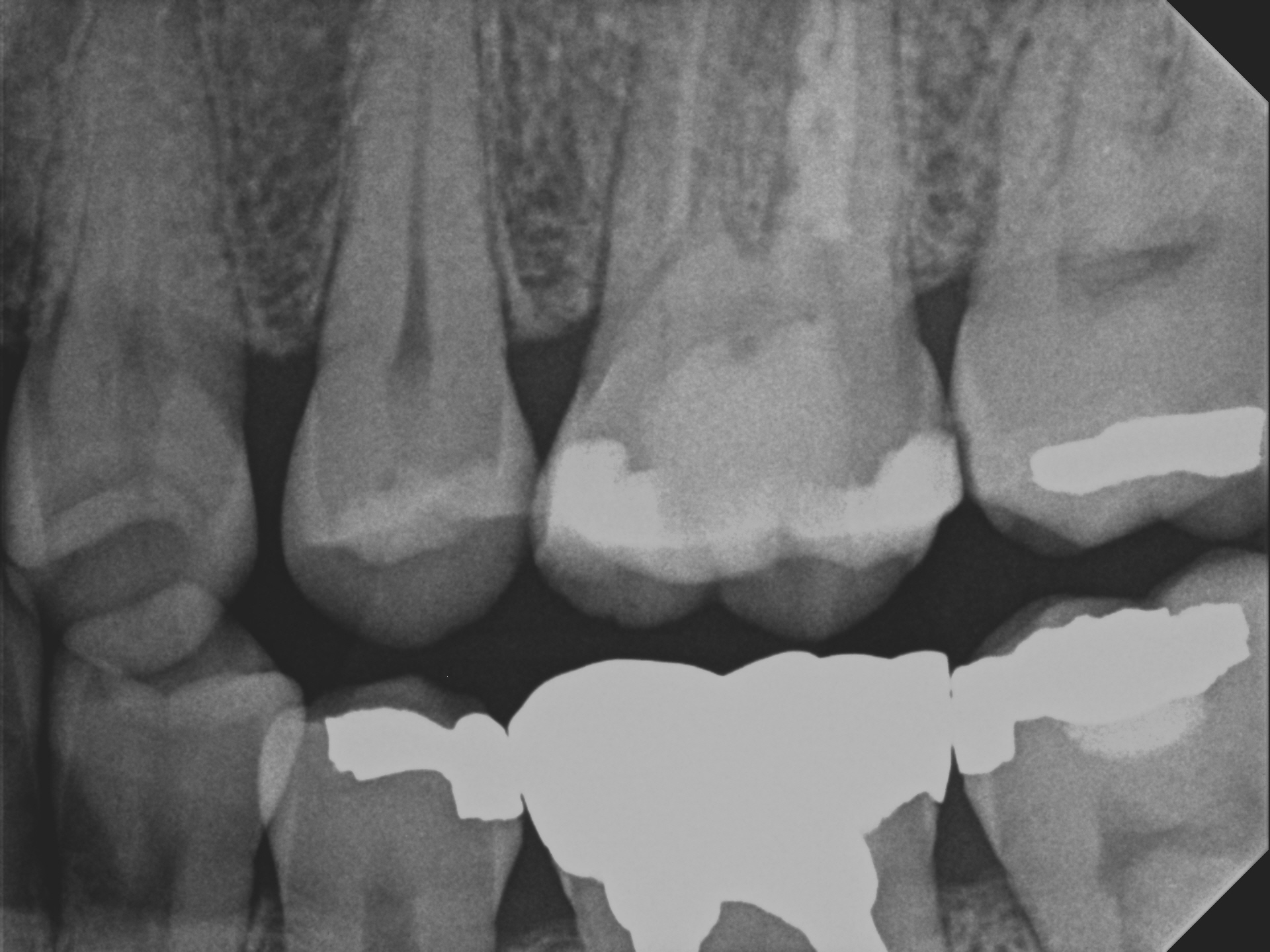
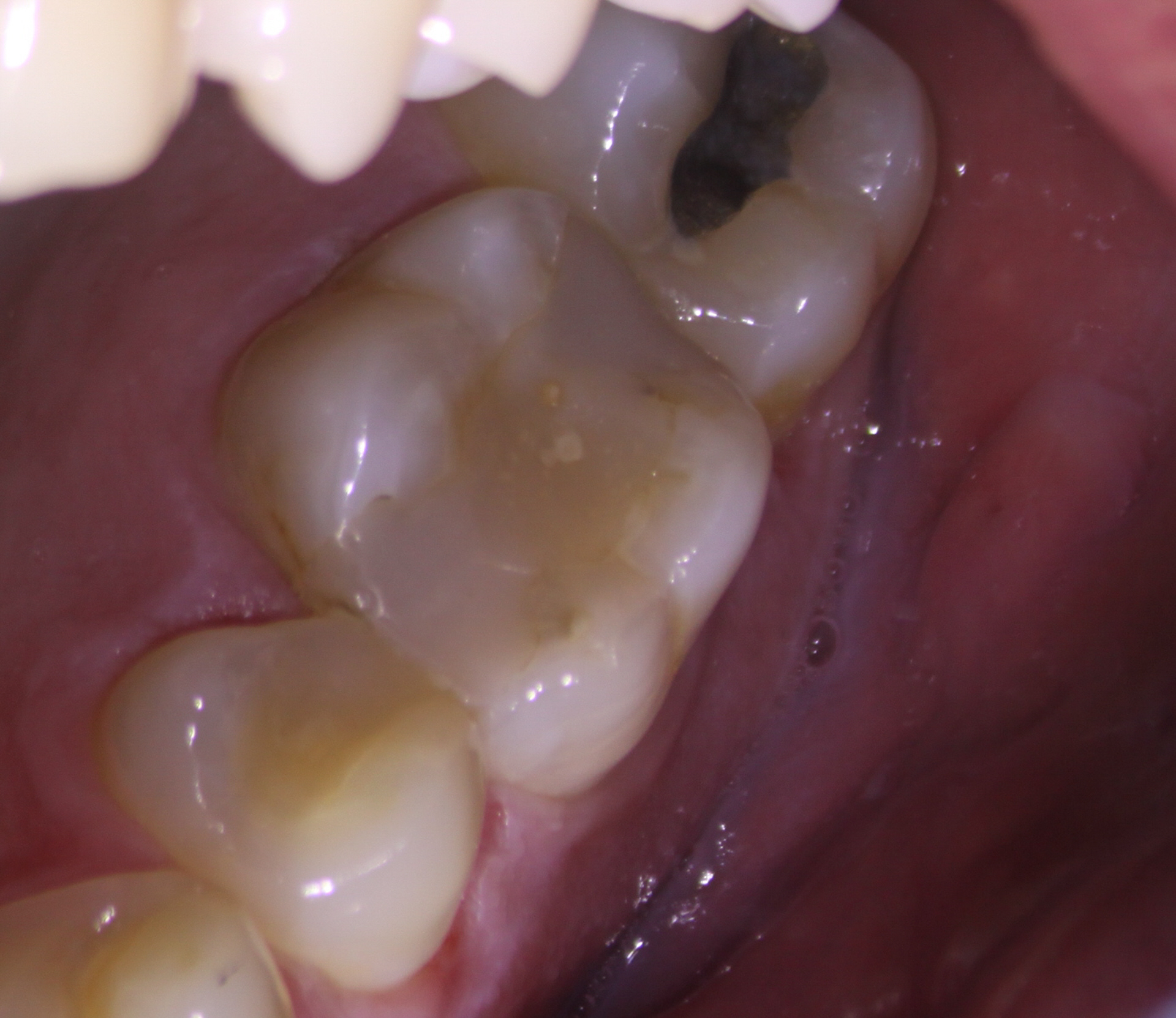
Radiographic examination showed a diffuse radiolucent area associated with both mesiobuccal and distobuccal roots . CBCT confirmed this finding with minimal associated radiolucency in the Palatal root area. However, the Palatal gutta percha cone appeared to be buckled and “accordioned” in the palatal canal, indicating less then optimal obturation. There only appeared to be one canal filled in the mesiobuccal root, which was suspect. cbCT image confirmed that there was an untreated MB2. A diagnosis of Acute Apical Abscess was made an retreatment steps were initiated.
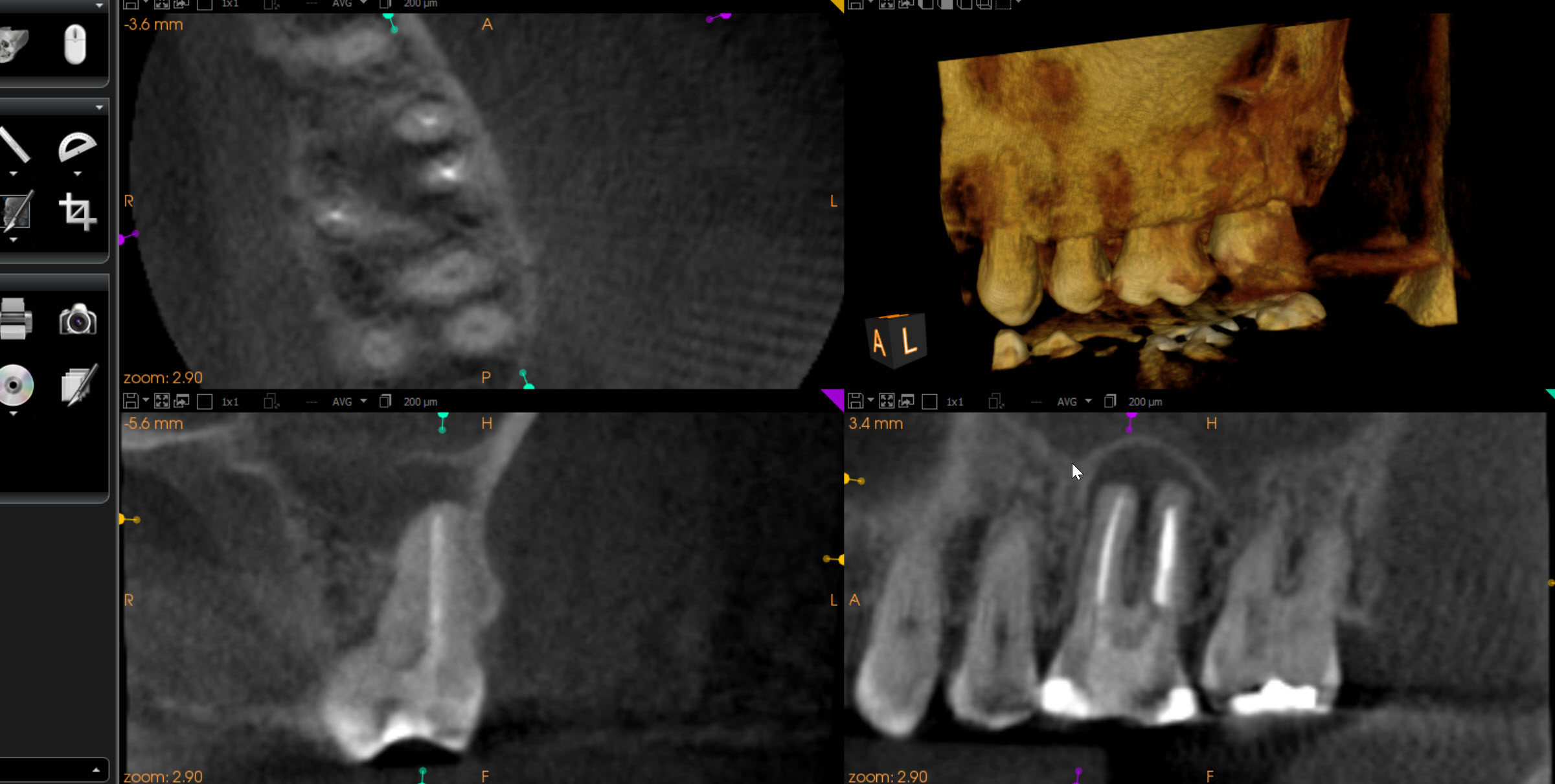
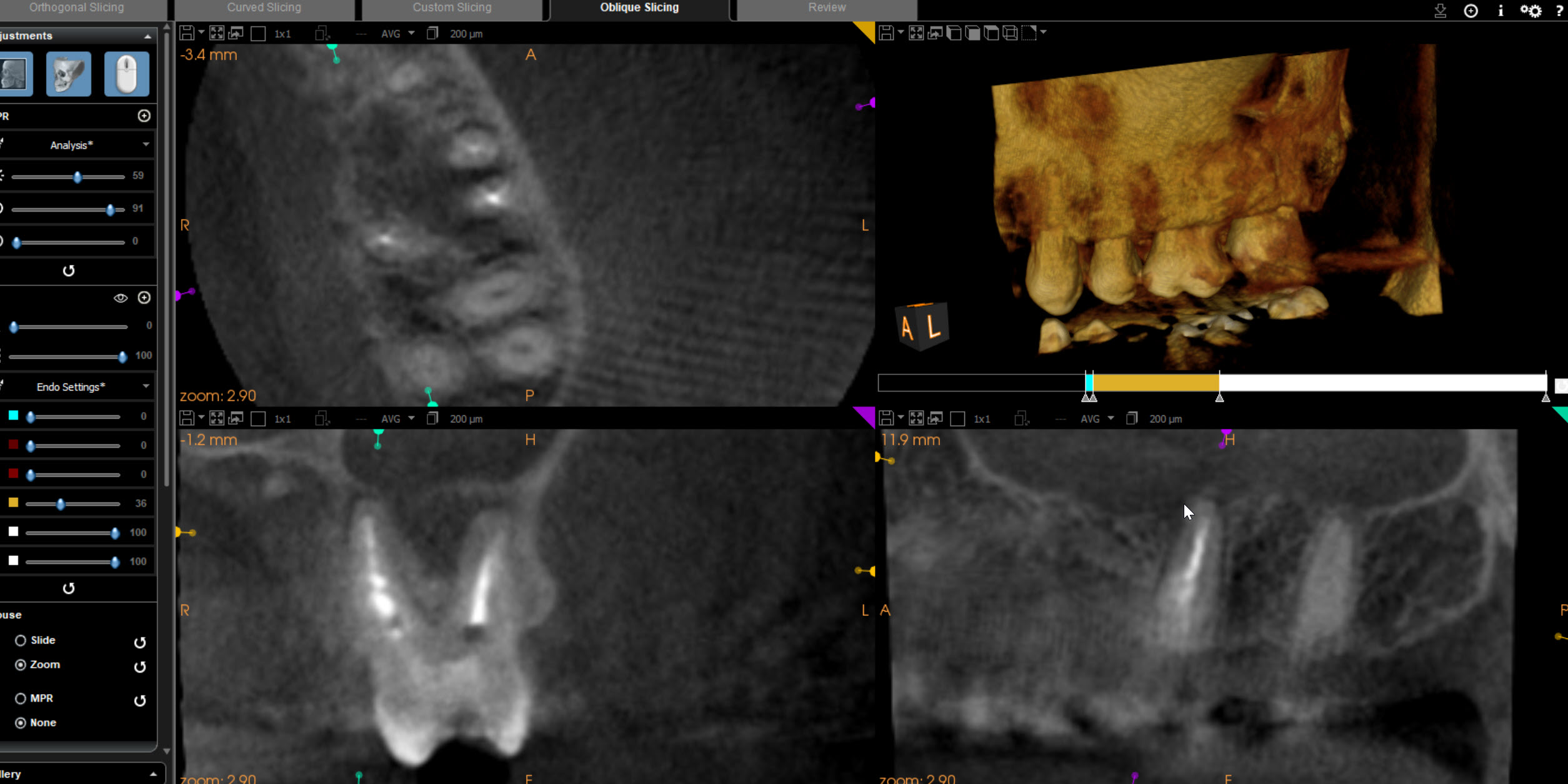
The tooth was accessed and the filling material was removed from all the canals. Access to the unfilled MB 2 canal immediately resulted in purulent drainage into the pulp chamber.
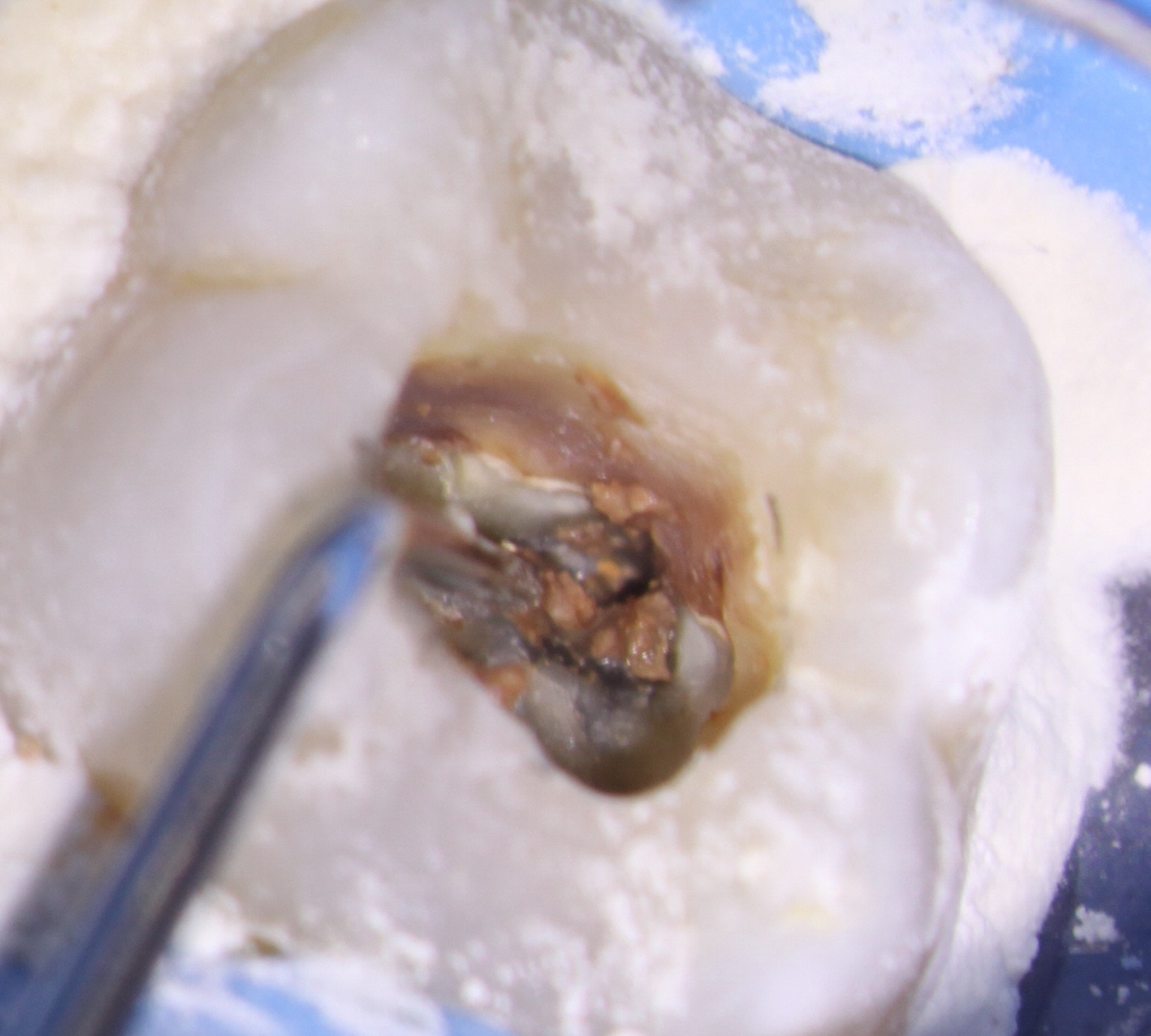
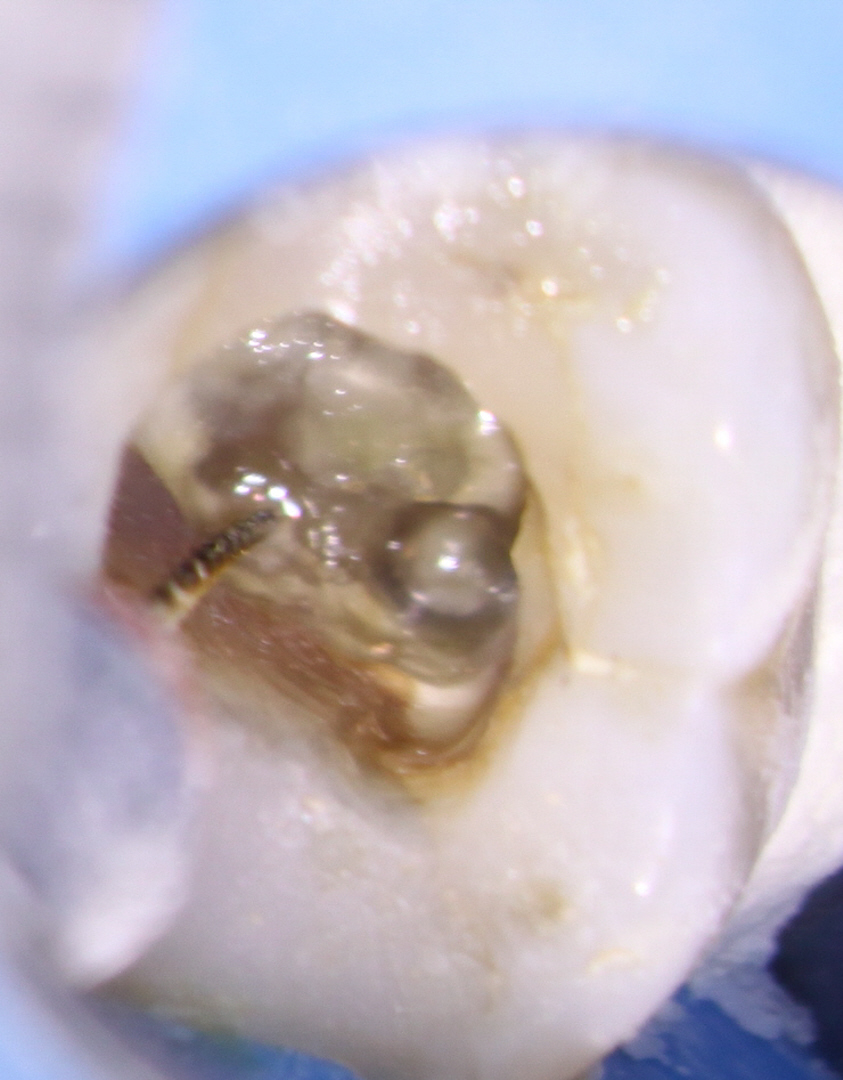
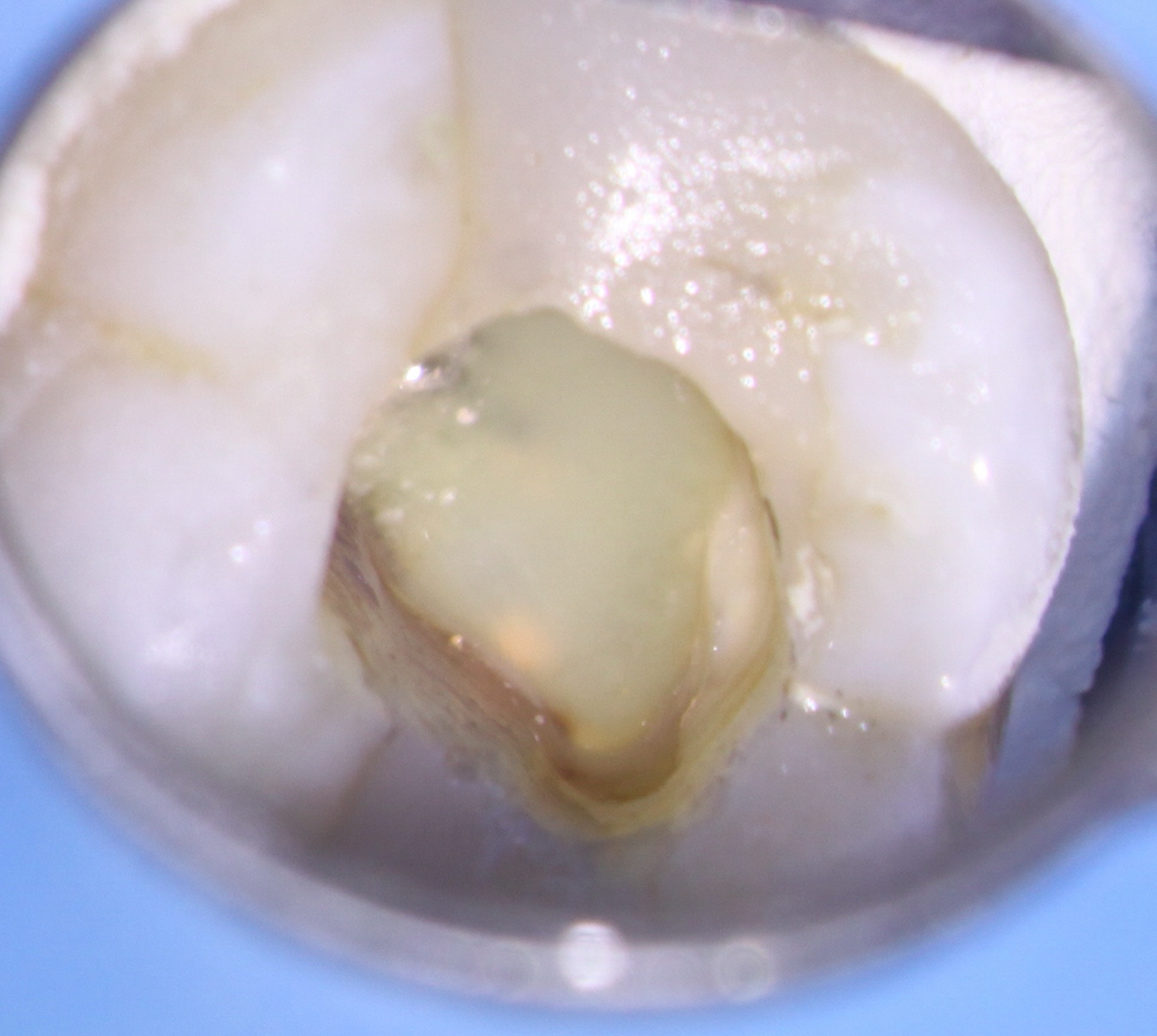
The canals were cleaned shaped and medicated with calcium hydroxide and the patient was reappointed for completion of treatment once symptoms had subsided.
Treatment was uneventful and all four canals were filled. The tooth was subsequently restored with a full Crown and recall images show evidence of good healing.
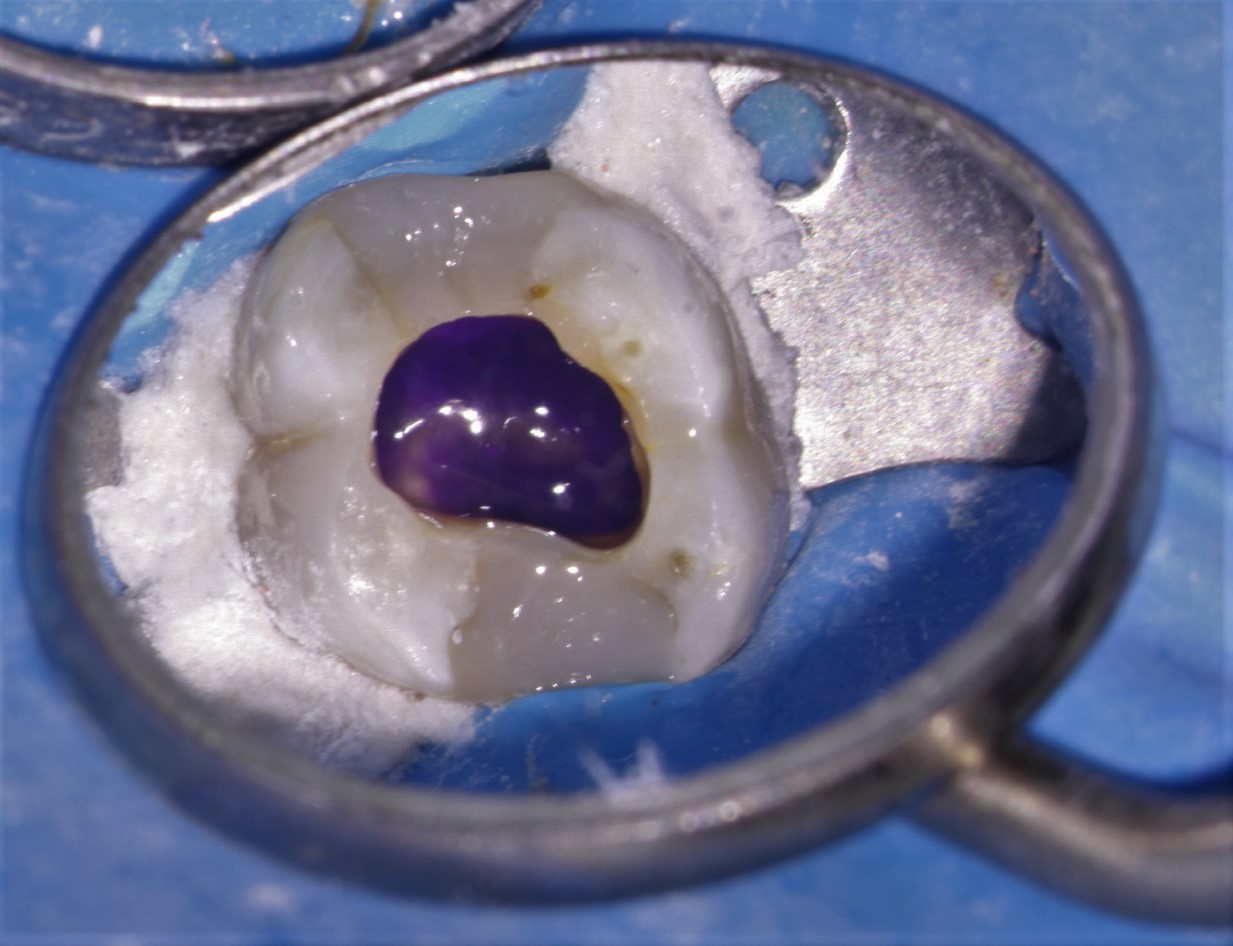
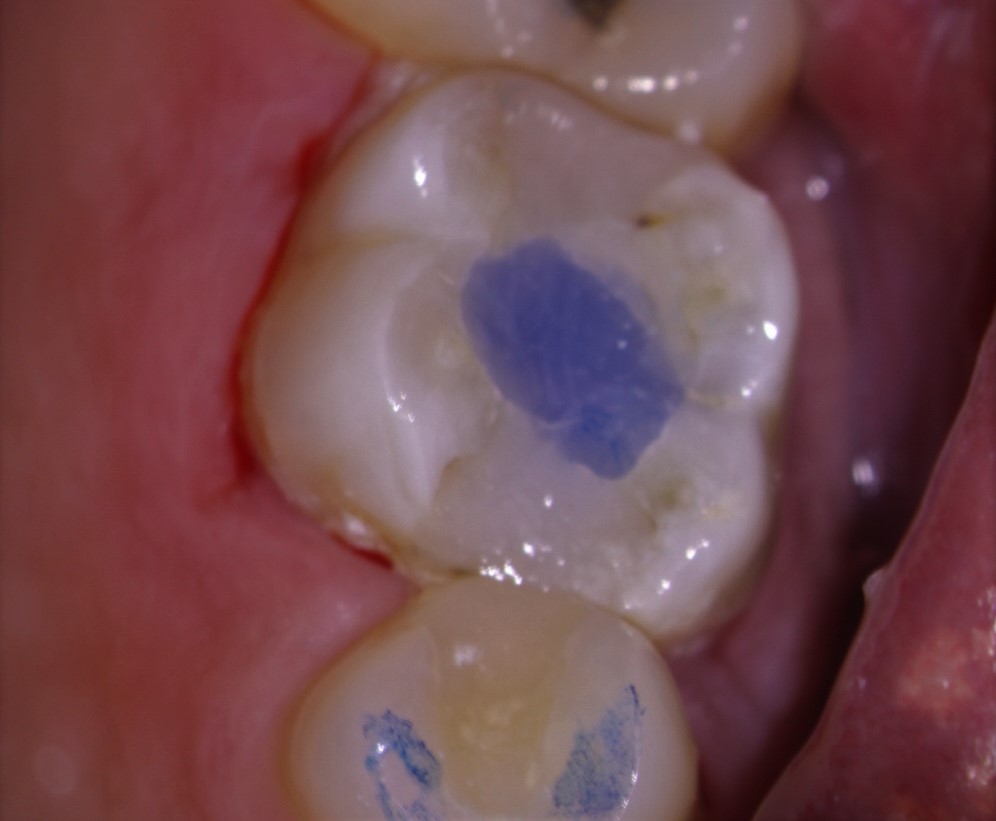
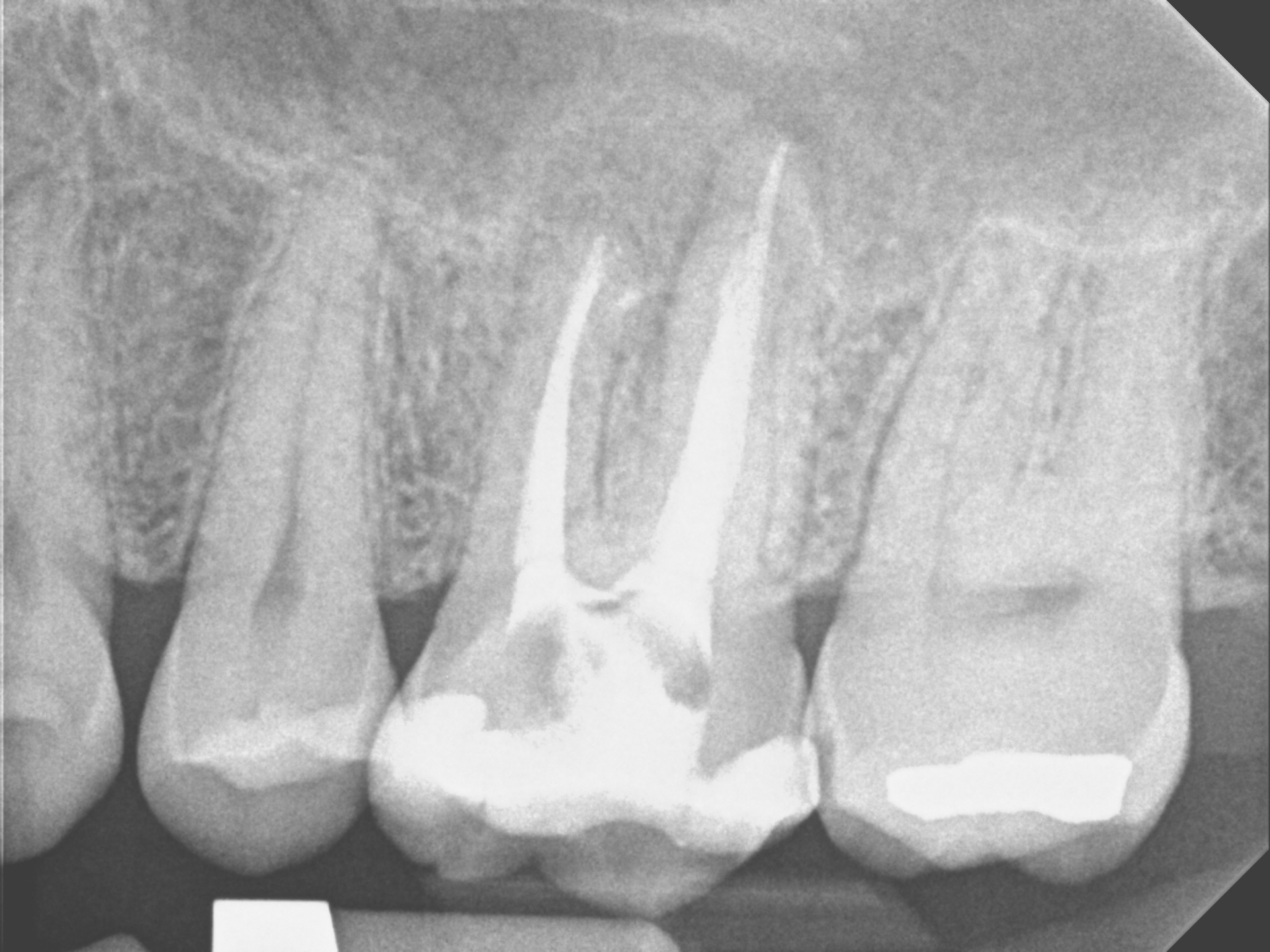
The canals were cleaned shaped and medicated with calcium hydroxide and the patient was reappointed for completion of treatment once symptoms had subsided.
Treatment was uneventful and all four canals were filled. The tooth was subsequently restored with a full Crown and recall images show evidence of good healing.
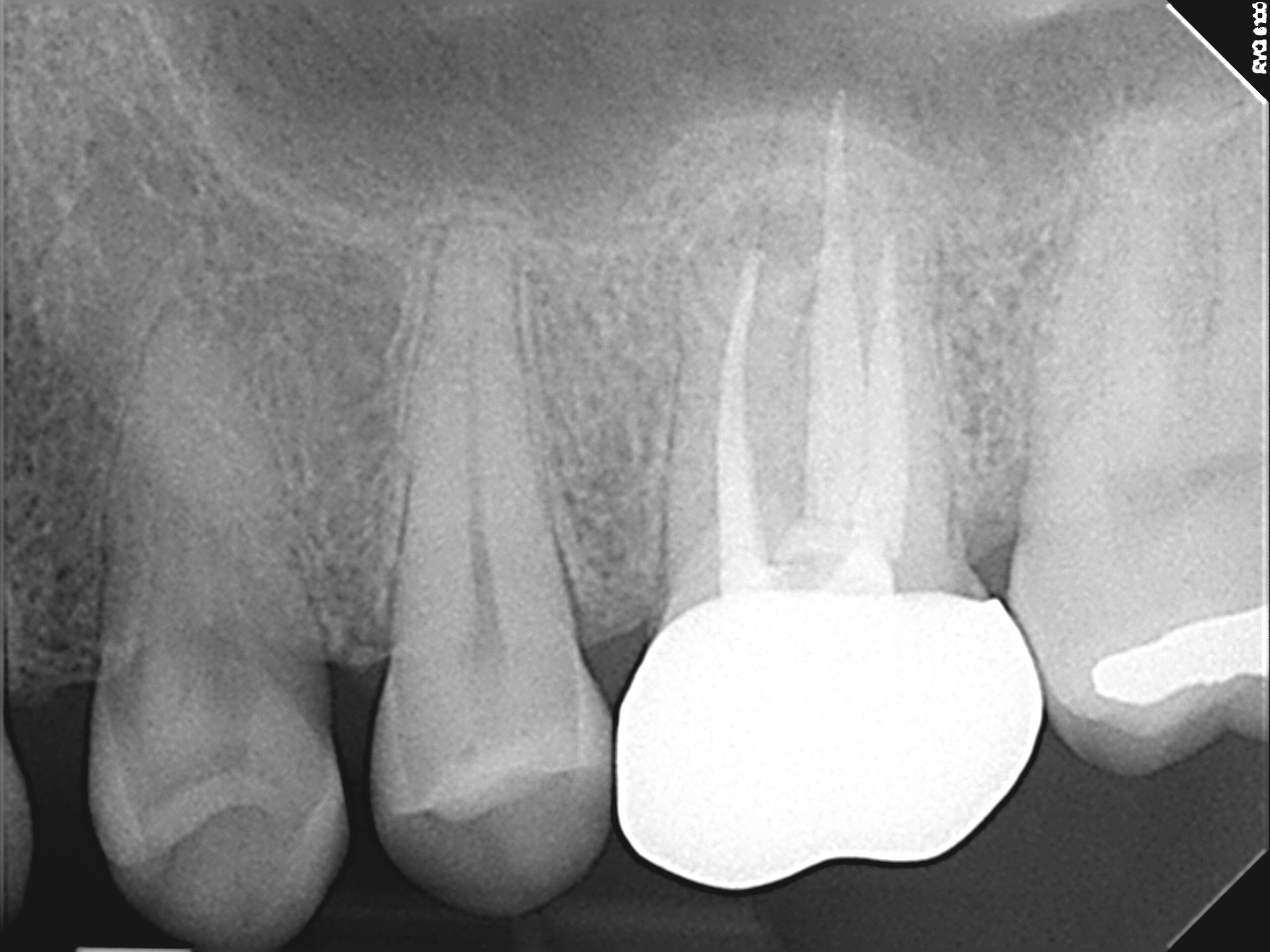
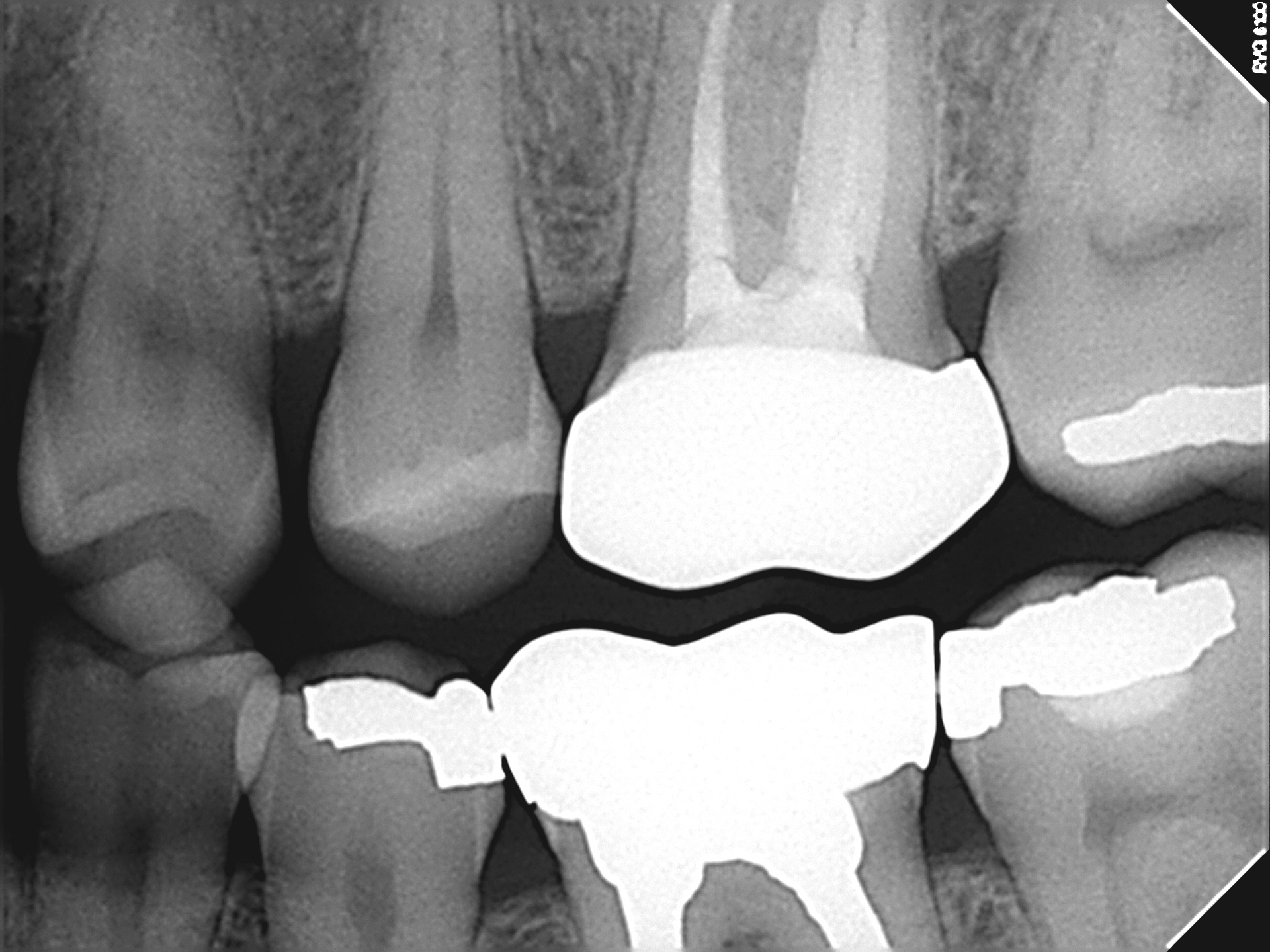
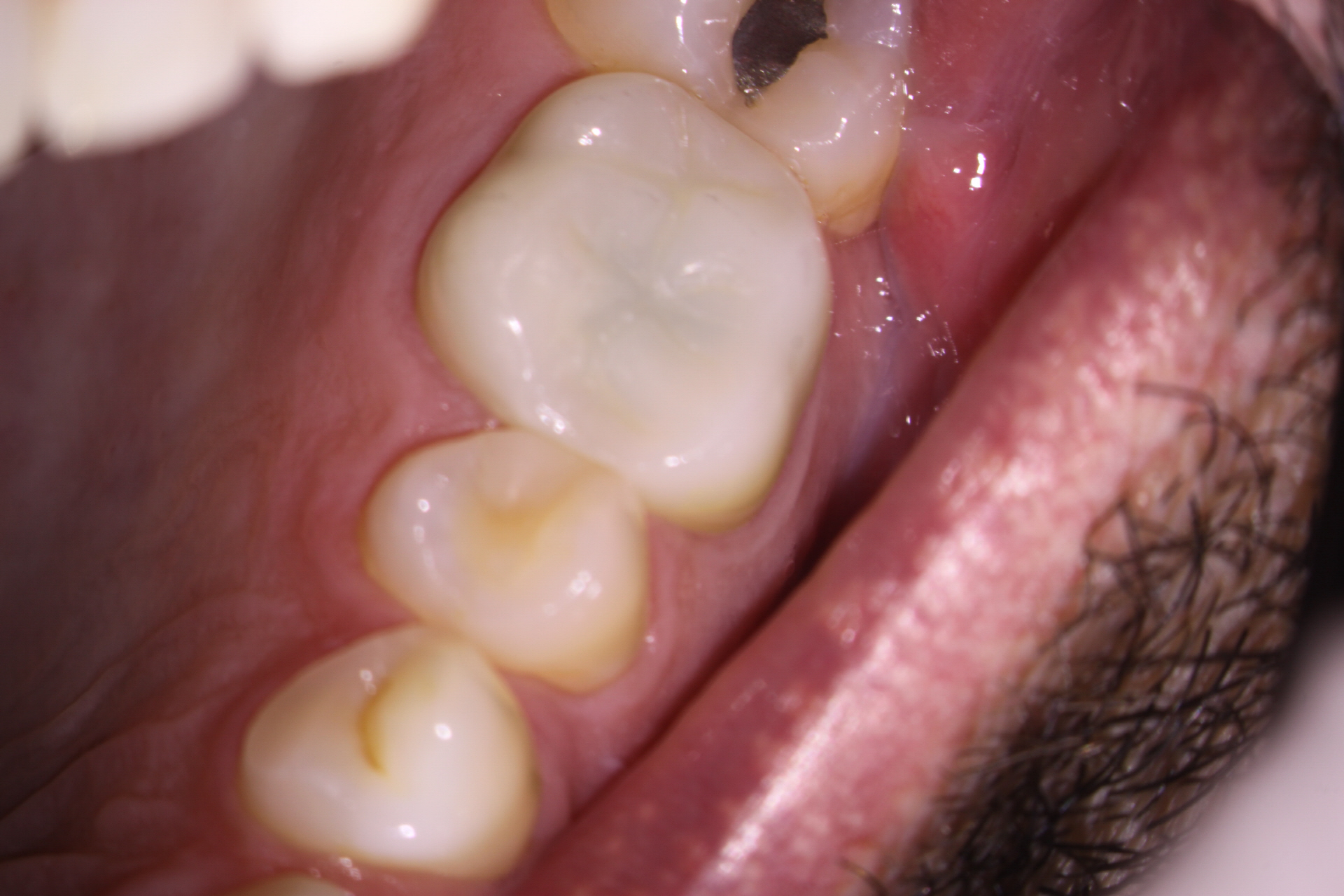
This is a situation where the endodontic treatment was initially performed in a less than acceptable manner. However, this patient had no symptoms for almost 20 years.
Endodontists are occasionally confronted with cases in which only one of the roots has a radiolucent finding associated with with it and we are sometimes asked (for financial or other reasons) to treat ONLY the symptomatic area or the area that appears to be associated with pathology on the radiograph. While this may allow the access to be more conservative and preserve tooth structure or the restoration, it places the endodontist in the uncomfortable position of having to rely upon a previous clinician’s work for treatment of canals to which he now must also take responsibility. Compromise of this situation happens occasionally but it leaves the retreating clinician open to risk of persistent symptoms that may have nothing to do with any treatment/retreatment that he has performed. Therefore, whenever cases are referred to me for treatment (unless the situation is exceptional), I insist upon retreating the case in its entirety so that I know that all canals have been treated as I saw best. This may involve disassembly and re-restoration, which may push costs up to the point where an implant is considered, instead.
Occasionally, I will compromise (at the behest of the referring Dentist), because the patient does not wish to have disassembly of the tooth performed (for financial or insurance reasons). Whether you choose to comply with this request is something that each treating clinician must decide.
One thing is certain, performing the definitive treatment as you see it (no matter what the cost or whatever that entails) gives you the best chance for achieving the desired results. And when it comes to retreatment, we want to give ourselves the best possible chance for success, knowing that both patients finances and tooth structure need to be “spent” wisely.
